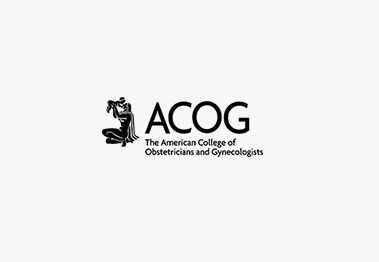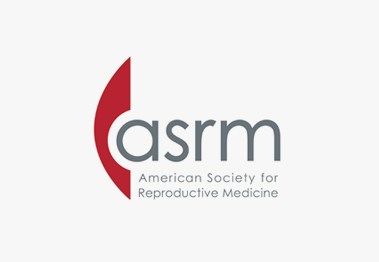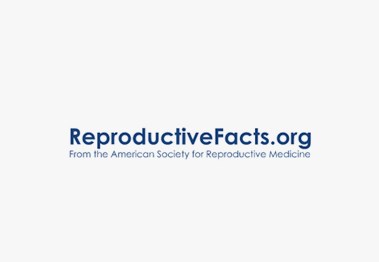Glossary of Fertility Terms
At Reach Fertility, we believe that it is important for patients and prospective patients to understand the terms and acronyms that are associated with infertility and its treatment. Whether you are just beginning to consider fertility treatment and are trying to make sense of it all or are a current patient who has run across a term that you haven't encountered before, this glossary is designed to help.
Click on any of the letters below to scroll down to that area of the glossary. Only the initial letters of available words are displayed.
Adhesions - Scar tissues that attach to the surfaces of organs.
Andrologist - A medical doctor or Ph.D. who specializes in the study of male reproduction.
Anovulation - A condition in which a woman does not ovulate (produce and release eggs). Menses may still occur.
ART (Assisted Reproductive Technology) - Any procedure that involves removal of eggs from a woman prior to fertilization, such as in vitro fertilization.
Assisted Hatching - A laboratory procedure that dissolves an embryo surface to improve the likelihood of implantation using chemicals or lasers.
Asthenozoospermia - A condition in which less than 50 percent of the sperm are motile.
Azoospermia - The absence of sperm in the seminal fluid, usually caused by a blockage or an impairment of sperm production.
Basal Body Temperature - Used to time intercourse to increase the likelihood of conception and also as part of the rhythm method for preventing conception.
Beta hCG Test (BhCG) - A blood test to determine pregnancy, it gives a positive reading if human chorionic gonadotropin (hCG) is present in the blood.
Biochemical Pregnancy - See Chemical Pregnancy.
Blighted Ovum (EGG) - A fertilized egg that implants in the uterus, but does not develop further and dies.
Bromocriptine (Parlodel) - An oral medication used to lower the level of the hormone prolactin.
Cancelled Cycle - Discontinuation of an ART cycle usually prompted by poor response to hormone therapy, no egg recovery or failed fertilization.
CBC (Complete Blood Count) - A routine preoperative blood test that gives information regarding infection and anemia.
Cervical Mucus - Secretions produced by the cervix. The thickness of the mucus varies according to the phase of the menstrual cycle. In the days just before ovulation, the mucus is easily penetrable by sperm.
Cervix - The lower section and opening of the uterus that protrudes into the vagina. Sperm pass through the cervix into the uterus during intercourse. It dilates during labor to allow the passage of the infant.
Chemical Pregnancy - A very early pregnancy detectable only by a blood test for hCG. The hCG level in the blood rises high enough to yield a positive pregnancy test, but then stops rising and does not lead to a clinical pregnancy, but may result in a very early miscarriage.
Clinical Pregnancy - A pregnancy with fetal cardiac activity within the uterus detectable only by ultrasound five weeks after egg retrieval.
Clomiphene Citrate (Clomid/Serophene) - A synthetic drug used to stimulate production of follicle stimulating hormone and lutenizing hormone. Often used to treat milder forms of ovulation failure or Polycystic Ovarian Syndrome (PCOS).
Congenital - A characteristic or defect present at birth, it may be hereditary or acquired during gestation.
Corpus Luteum - Remnant of a follicle after ovulation. It releases progesterone, a hormone that preserves the uterine lining.
Cryopreservation - A procedure used to preserve (by freezing) and store embryos or sperm. Cycle - The period of time, about one month, when an infertility treatment is initiated and continuing until the treatment is halted or completed.
Ectopic Pregnancy - A pregnancy in which the fertilized egg implants outside the uterine cavity (usually in the fallopian tube, the ovary or the abdominal cavity). May require surgical intervention or use of medications (Methotrexate) to stop growth.
Egg and Embryo Vitrification - Recent cryo technique which "flash freezes" eggs and embryos, preventing crystals, which may hamper results.
Egg Donation - See Oocyte Donation.
Egg Retrieval - See Oocyte Retrieval.
Embryo - The developing baby in the early stages of growth, from conception to the eighth week of pregnancy.
Embryo Freezing - See Cryopreservation.
Embryologists - Professionals trained in advanced laboratory techniques who prepare and provide the necessary conditions for the fertilization of eggs. They also facilitate the growth, development, maturation, and preservation of embryos.
Endocrinologists - See Reproductive Endocrinologists.
Endometriosis - The presence of endometrial tissue (the uterine lining) in areas outside of the uterus such as the tubes, ovaries and peritoneal cavity. This condition can cause painful menstruation and infertility.
Endometrium - The glandular membrane lining the uterus where implantation occurs.
Epididymis - The elongated organ in the male that lies above and behind the testicles. It contains a highly convoluted canal four to six meters in length where sperm are stored, nourished, and matured.
Estradiol Level (E2 Level) - The amount of estradiol, a form of estrogen, in the blood. The E2 level, measured before ovulation, correlates with how mature the follicles are.
Estrogen - A group of female hormones responsible for the development of secondary sexual characteristics. Estrogen is produced mainly by the ovaries from the onset of puberty until menopause.
Fallopian Tube - Either of a pair of tubes that conduct eggs from an ovary to the uterus. Natural fertilization takes place as an egg travels through a fallopian tube.
Female Factor Infertility - The condition when a couple's infertility is attributed to the woman.
Fertilization - Penetration of an egg by a sperm and the fusion of genetic material.
Fetal Reduction (or Selective Reduction) - A medical procedure to decrease the number of fetuses in a multiple gestation.
Fetus - The developing baby after the embryo stage, from the ninth week of pregnancy to the moment of birth.
Fibroid/Myoma - A non-cancerous muscle tumor found within the wall of the uterus.
Follicle - Fluid-filled sac on the ovary that (usually) contains a ripening egg. The follicle can release an egg at ovulation. A physician can retrieve the egg from the follicle during an ART treatment cycle.
Follicle Stimulating Hormone (FSH) - A purified or recombinant form of follicle stimulating hormone, FSH can be injected under the skin to stimulate development and maturation of follicles.
Follicular Phase - The portion of the menstrual cycle when ovarian follicle development takes place, (usually the first 14 or so days after menses begins).
Gamete - A sperm or an egg.
Gamete Intra-Fallopian Tube Transfer (GIFT) - A surgical procedure in which a sperm - egg mixture is transferred into the fallopian tubes where natural fertilization may occur.
Gestation - The period of fetal development in the uterus from conception to birth, usually 40 weeks in humans.
Gestational Carrier - A woman who carries the pregnancy to term but is not the genetic parent of the baby. Also called Gestational Surrogate.
GnRH (Gonadotropin Release Hormone) - A hormone that controls the synthesis and release of the pituitary hormones FSH and LH. GnRH is produced by the hypothalamus.
Gonadotropin - A hormone that can stimulate the testicles to produce sperm or the ovaries to produce an egg.
Hormonal Assay - Also known as hormone tests. These include tests for levels of FSH (follicle stimulating hormone), LH (luteinizing hormone), DHEA-S dehydroepiandresterone), prolactin, progesterone, estrogen and hCG.
Hormone - A chemical substance produced by one organ in the body that regulates the activity of another organ.
Human Chronic Gonadotropin (hCG) - A hormone secreted by the placenta that preserves the pregnancy by prolonging the life of the corpus luteum and stimulating progesterone production. A pregnancy test is positive when hCG is detected. It can be administered therapeutically (Pregnyl or Profasi) to help solve some infertility problems.
Human Menopausal Gonadotropin (hMG) - A natural product containing both human FSH and LH (sold as Pergonal, Repronex and Humegon). It is used to treat both male and female infertility and to stimulate the development of multiple eggs. These hormones are extracted from the urine of postmenopausal women.
Humegon - See Human Menopausal Gonadotropin (hMG)
Hydrocele - A fluid-filled swelling in the scrotum
Hysterectomy - The removal of the uterus. A partial hysterectomy removes the uterus including, in some cases, the cervix. A total hysterectomy also removes the ovaries and fallopian tubes.
Hysterosalpingogram (HSG, Hysterogram, Tubogram) - An X-ray procedure used to determine whether the fallopian tubes are open and capable of functioning properly. The physician injects dye into the uterus through the cervix. The dye passes through the tubes if they are open. An HSG can also reveal information such as the configuration of the uterus, irregularities, and the presence of fibroids.
Hysteroscopy - A surgical procedure in which a telescope-like device is inserted through the cervix to view the inside of the uterus. This procedure is sometimes performed in conjunction with a laparoscopy.
Idiopathic Infertility (Unexplained Infertility) - The term used when no reason can be found to explain the cause of a couple's infertility.
Immunological Response - Condition when either partner produces sperm antibodies, which may cause infertility.
Implantation - The embedding of the fertilized egg in the lining of the uterus.
Infertility - The inability of a couple to achieve a pregnancy after one year of regular unprotected sexual relations, or the inability of a woman to carry a pregnancy to live birth.
Intracytoplasmic Sperm Injection (ICSI) - A laboratory procedure in which a single sperm is directly inserted into an individual egg.
Intrauterine Insemination (IUI) - The introduction of specially prepared sperm directly into the uterus through the cervix.
In Vitro Fertilization (IVF) - A procedure in which one or more eggs, each removed from a ripe follicle, is fertilized by a sperm outside the human body.
Laparoscopy - A surgical procedure in which a telescope-like device is inserted through a small incision near the navel to view the pelvic cavity, the ovaries, fallopian tubes, and uterus.
Leuprolide Acetate - See Lupron.
LH - See Luteinizing Hormone.
LH Surge - A spontaneous release of large amounts of luteinizing hormone (LH) during a woman's menstrual cycle. This normally results in the release of a mature egg from a follicle (ovulation). Ovulation Predictor Kits (OPKs) measure LH in the urine.
Lupron - A hormonal medication that can create a pseudo menopause. A chemical similar to GnRH, it first stimulates the female hormones, then uppresses a woman's secretion of FSH and LH. Concurrent treatment with Lupron tends to increase the number of follicles, oocytes (eggs), and embryos during a cycle, decreasing the risk of a cancelled cycle.
Lupron "Down Regulation" - A treatment with Lupron that takes advantage of the suppression of natural hormone (LH and FSH) secretions. Used before injection of gonadotropins to stimulate follicular development. Lupron "Flare" - A treatment with Lupron that takes advantage of the initial stimulation and rise or "flare" of the woman's LH and FSH levels after the start of Lupron administration, lasting one to three days.
Luteal Phase - The days of a menstrual cycle following ovulation and ending with menses (usually lasting between 12 and 14 days).
Luteinizing Hormone (LH) - A hormone that causes the ovary to release a mature egg (ovulation). In the male, LH stimulates testosterone production. LH is secreted by the anterior pituitary. In the female, LH stimulates progesterone production after ovulation has occurred.
Male Factor Infertility - The condition when a couple's infertility is attributed to the man.
Microinsemination - A laboratory technique in which sperm are injected next to the egg cell surface to increase the likelihood of fertilization.
Micromanipulation - Procedure in which a sperm, egg or embryo is manipulated under a microscope (includes ICSI, Assisted Hatching and embryo biopsy for PGD).
Motility - The percentage of all moving sperm in a semen sample. Normally, 50 percent or more sperm in a sample move rapidly.
Multiple Birth - The birth of two or more offspring produced in the same gestational period. Multiple Gestation or Multiple Pregnancy - The conception of two or more fetuses in the same woman at the same time, whether or not they result in live births.
Myomectomy - The surgical removal of non-cancerous fibroid tumors originating from the wall of the uterus.
Ovarian Hyperstimulation Syndrome (OHSS) - A possible side effect of medically induced ovulation, characterized by swollen, painful ovaries and, in some cases, the accumulation of fluid in the abdomen and chest.
Oligo-Ovulation - Irregular ovulation.
Oligozoospermia - A condition in which the number of sperm in a semen sample are abnormally low.
Oocyte - The egg cell produced in the ovaries. Also called the ovum or gamete.
Oocyte Donation - The process in which eggs, removed from the ovaries of one woman, are donated for use by another.
Oocyte Retrieval - A surgical procedure, usually under sedation, to collect the eggs contained with the ovarian follicles before ovulation. The physician inserts a needle into the follicle, draws out the follicle's fluid and egg through the needle, and then places the fluid and egg into a dish for identification by the embryologist.
Ovulation - Release of a mature egg from a follicle at the surface of the ovary.
Ovulation Induction - The therapeutic use of drugs or hormones to stimulate egg development and release. Useful hormones and hormone-based medications include clomiphene citrate, Pergonal, Humegon, Repronex, Follistim, Gonal F, Bravelle and hCG (Pergonol, Pregnyl or Ovidrel).
Papanicolaou Smear (Pap Smear) - A screening test to evaluate the cells of the cervix to determine whether they are normal or cancerous. The physician or nurse removes some cells from the cervical canal with a brush or spatula (usually a painless process, then smears them onto a glass plate). A pathologist examines the cells under a microscope.
Pelvic Inflammatory Disease (PID) - Inflammatory disease of the pelvis, often caused by infection, which can lead to infertility.
Pergonal - See Human Menopausal Gonadotropin (hMG)
Post-Coital Test (PCT) - Microscopic study of samples of vaginal and cervical secretions taken several hours after sexual relations and examined for live, moving sperm. Also known as the Sims-Huhner Test.
Pregnyl - See Human Chorionic Gonadotropin (hCG).
Preimplantation Genetic Diagnosis (PGD) - The procedure used to detect genetic or chromosomal abnormalities on embryos created during an IVF cycle. This is a delicately precise micro-manipulative procedure, in which embryologists remove either necessary DNA from the egg shortly after fertilization (polar body biopsy) or a single cell from a three-day old embryo (embryo biopsy). Molecular biologists examine
Premature Ovarian Failure (POF) - The occurrence of menopause before the age of 40.
Profasi - See Human Chorionic Gonadotropin (hCG).
Progesterone - A hormone secreted by the corpus luteum of the ovary after ovulation has occurred. Also produced by the placenta during pregnancy.
Prolactin - A hormone produced by the pituitary. The level of prolactin in the blood can reveal hypothalmic-pituitary disorders that may hinder ovulation.
Reproductive Endocrinologists (RE) - Physicians trained in obstetrics and gynecology who further specialize and are certified to treat infertility with surgical procedures and technologies associated with physician-assisted reproduction.
Rubella Titer - A blood test that determines if the patient is immune to rubella (German measles), a viral disease that can cause severe birth defects. If a woman is not immune to rubella, she may be advised to have a rubella vaccination, wait one month before attempting pregnancy, and then re-test for immunity.
Secondary Infertility - The inability to conceive or carry a pregnancy after having given birth to one or more children.
Selective Reduction - See Fetal Reduction.
Semen - The sperm and seminal secretions ejaculated during orgasm.
Semen Analysis (SA) - A microscopic examination of freshly ejaculated semen to evaluate the number of sperm (count), the percentage of moving sperm (motility), and the size and shape of the sperm (morphology).
Sims-Huhner Test - See Post-Coital Test.
Sperm Antibodies (Immunological Response) - Entities that may attack and destroy sperm cells. These antibodies can be produced by women and by men against their own sperm, often seen in men who have had a vasectomy.
Sperm Wash - A technique for separating sperm from seminal fluid.
Split Ejaculate - A method of collecting a semen specimen so that the first portion of the ejaculate is caught in one container and the rest in a second container. In most men the first specimen will contain the vast majority of the sperm.
Spontaneous Abortion - A miscarriage or the unintended termination of a pregnancy before the twentieth week.
Sterility - The total inability to reproduce. Not to be confused with infertility.
Stimulation - Administration of hormones that induce development of multiple ovarian follicles.
Surrogate - A woman who becomes pregnant through insemination with the sperm of the husband of an infertile woman, and then following delivery, turns the child over for adoption by the couple. Also called "Traditional Surrogate."
Swim-up Test - A technique that separates motile sperm from non-motile sperm and cellular debris in a semen sample. The most motile sperm will "swim up" and are more easily separated for insemination.
Testicles - The two male sexual glands contained in the scrotum. They produce the male hormone testosterone and produce the male reproductive cells, the sperm.
Testicular Biopsy - A small excision of testicular tissue to determine the ability of the cells to produce normal sperm. Or to retrieve sperm for use in IVF/ICSI.
Testosterone - The most potent male sex hormone; produced in the testes.
Tubal Embryo Transfer (TET) - A surgical procedure in which a fertilized and divided egg is transferred to the fallopian tubes.
Therapeutic Insemination (TI) - A procedure in which sperm from a male partner or from a donor (Therapeutic Donor Insemination-TDI) are placed into a woman's vagina or cervix. Also called artificial insemination, but distinct from Intrauterine Insemination.
Ultrasound - Technique used to view the follicles in the ovaries or the fetus in the uterus. See also Vaginal Ultrasound.
Unexplained Infertility - See Idiopathic Infertility.
Uterus - The hollow, muscular organ in the woman that holds and nourishes the fetus until the time of birth.
Vaginal Ultrasound - Technique used to view the follicles, fetus, and other soft tissues by projecting sound waves through a probe inserted into the vagina. A baseline ultrasound shows the ovaries in their normal state. A follicular ultrasound shows egg follicle maturation. A pregnancy ultrasound shows if a pregnancy is in the uterus or in a fallopian tube (an ectopic pregnancy). Ultrasound pictures can be used to measure growth.
Varicocele - A collection of varicose veins in the scrotum. Blood flows in an abnormal direction in these veins towards the testicles.
Vas Deferens - A pair of thick-walled tubes about 45cm long in the male that lead from the epididymis to the ejaculatory duct in the prostate. During ejaculation, the ducts make wave-like contractions to propel sperm forward.
Zygote Intrafallopian Transfer (ZIFT) - The surgical transfer of a zygote, or fertilized egg, into a fallopian tube one day after fertilization.
Fertility Support
At Reach Fertility, we want to ensure that you receive the information you need to make important choices involving your reproductive health. Listed below are valuable resources for individuals and couples experiencing infertility.
 The American Congress of Obstetricians and Gynecologists (ACOG)
The American Congress of Obstetricians and Gynecologists (ACOG)
The ACOG patient page provides a variety of fact sheets, FAQs, and videos covering various women's health concerns.
 American Society for Reproductive Medicine
American Society for Reproductive Medicine
ASRM is a multidisciplinary organization dedicated to the advancement of the art, science, and practice of reproductive medicine. The Society accomplishes its mission through the pursuit of excellence in education and research and through advocacy on behalf of patients, physicians, and affiliated health care providers. The Society is committed to facilitating and sponsoring educational activities for the lay public and continuing medical education activities for professionals who are engaged in the practice of and research in reproductive medicine.
 PATH2PARENTHOOD
PATH2PARENTHOOD
Path2Parenthood (formerly AFA - The American Fertility Association) is a non-profit organization that provides information about a wide range of fertility issues, including reproductive and sexual health, infertility treatments, adoption, and third party reproduction. The organization also hosts an online community where individuals can consult with experts about a wealth of topics, everything from IVF to acupuncture, in the comfort of their own homes.
 Reproductive Facts
Reproductive Facts
An independent patient information resource center provided by the American Society for Reproductive Medicine.
 resolve
resolve
resolve, the National Infertility Association. resolve helps individuals who are experiencing infertility by providing support groups and connecting them with others who have similar experiences and concerns and providing referrals to trusted infertility specialists.
 sart (Society for Assisted Reproductive Technologies)
sart (Society for Assisted Reproductive Technologies)
The Society for Assisted Reproductive Technologies is a professional organization for physicians who provide in vitro fertilization and related procedures. The goals of SART are to establish and uphold high standards of care for assisted reproductive technologies (ART) and to educate patients about these procedures.
sart Predictor
SART has developed a predictor based on nearly 500,000 cycles of therapy to more than 320,000 women throughout the United States since 2006. This calculator is meant to help you understand your chances of having a live birth, based on your personal situation.
Infertility Counseling Services
Dr. Eugenia Gullick, is an important member of our clinical team. As a licensed psychologist Dr. Gullick can facilitate discussion of emotionally stressful topics and help our patients navigate the decisions often involved in a fertility journey. Dr. Gullick is available to see Reach patients virtually or in person.

 LIVESTRONG
LIVESTRONG



